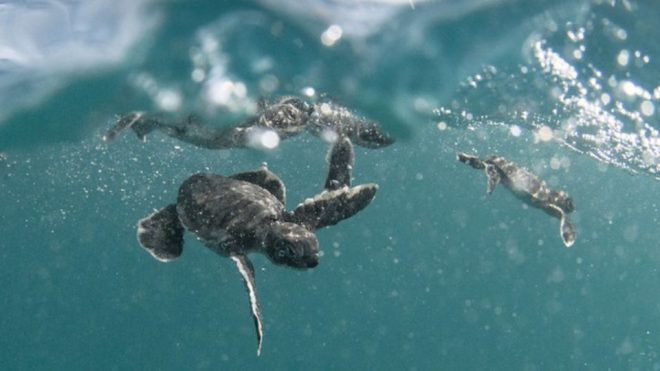WORLD, (August 02, 2021).- Ingesting plastics poses a risk to young sea turtles, which have evolved to thrive in the open ocean, away from predators but under constant threat of pollution, according to a study published Monday in “Frontiers in Marine Science. “
The research, led by the University of Exeter ( United Kingdom ), found plastic inside small turtles in Australia, along the east coasts -in the Pacific- and west -in the Indian Ocean-.
After being born in the sand of the beaches, sea turtles travel in the currents and spend their first years of life in the open sea, a behavior that is the result of evolution that represents a “trap” for the species because it takes it to highly polluted areas, indicates the study.
In a statement, researcher Emily Duncan, from the Center for Ecology and Conservation at the University of Exeter, explains that turtles do not have a defined diet: “they eat anything, and our study suggests that this includes plastic.”
Waste is carried away by currents
The marine currents now accumulate large amounts of waste and the turtles, which feed near the surface, end up ingesting it, according to the research, unable to estimate the effects of this problem on the survival of the species.
However, Duncan notes that “deaths in these early stages of life could have a significant impact on population levels.”
The scientists analyzed young sea turtles – from hatchlings to specimens with a shell of up to 50 centimeters – that were accidentally washed up or caught by fishermen off Australian shores.
The study, which included 121 specimens of five of the seven species of sea turtle in the world (green, loggerhead, hawksbill, olive ridley, and flat), showed that the specimens located on the Pacific coast contained much more plastic than those found on the coast of the Indian Ocean.
For example, 86% of loggerhead turtles on the east coast had ingested plastics, compared to 21% on the west coast, and similarly, 80% of Pacific flat turtles contained residues, compared to 9% of those from the Indian Ocean.
The plastic of the eastern turtles was mostly hard fragments, probably the remains of products used by humans, while the remains of the Indian Ocean were mainly fibers, possibly from ropes or fishing nets.
The next phase of the study, funded by the Sea Life Trust and the National Geographic Society, will be to assess whether and how plastic intake affects the health and survival of turtles.
Source: Heraldo de Mexico
TYT Newsroom



